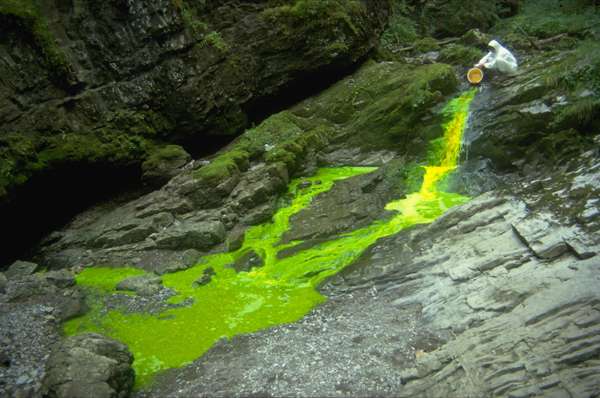Tracer techniques
AGW-Hydrogeology has many years of experience in the planning, execution and evaluation of tracer experiments for scientific and applied questions in karst, crevice and pore aquifers as well as surface waters (see also Research and Publications).
- Planning of tracing trials: Selection of suitable and toxicologically safe tracers, economical dosage of tracers, preparation of sampling plans.
- Execution of the entries, even under difficult conditions, partly in cooperation with professional divers or speleologists.
- Sampling and monitoring, using various techniques: cumulative (activated carbon), with automatic samplers and continuous (field fluorimeter, see field devices).
- Precision analysis of fluorescent dyes and salt tracers in the laboratory (see Analytics)
Example of a tracer experiment on the Neckar, from input to sampling and analysis, in cooperation with the BAW (Watch the video).
An example of a tracer experiment in a cave system is shown in a video of the article "Blautopf: Entry into Germany's most beautiful cave" by National Geographic.
Please address your inquiries to Leon Seehrich


